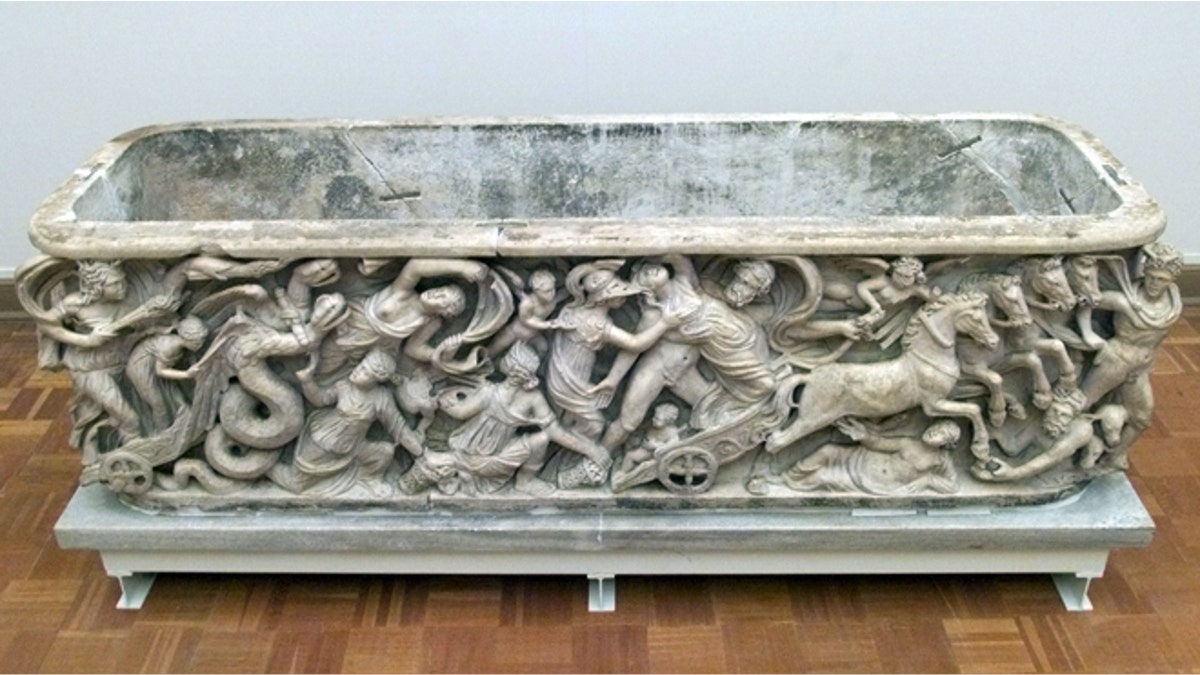
The completely restored sarcophagus of Emperor Charles the Great, or Charlemagne, (742-814) with scenes of the mythological story of Proserpina's kidnapping was displayed in Berlin's museum for antiquity and Byzantine art. (Reuters)
German scientists have said that there is a "great likelihood" that bones taken from the supposed resting place of Charlemagne are indeed the remains of the first ruler of the Holy Roman Empire.
The research team secretly opened the sarcophagus believed to contain Charlemagne's remains in 1988 and have been studying them ever since. One of the scientists, Dr. Frank Rühli, told the English-language German news site The Local that "Thanks to the results from 1988 up until today, we can say with great likelihood that we are dealing with the skeleton of Charlemagne."
At the time of his death in 814, Charlemagne ruled an area of Europe that stretched from present-day Spain in the west to present-day Austria in the east and from central Italy to the modern border between Germany and Denmark. He was buried in the cathedral at Aachen, now in Western Germany.
The scientists say that studying the dimensions of upper arm, thigh, and shin bones has given them to describe the man buried in the sarcophagus, and it matches contemporary descriptions of Charlemagne.
Chroniclers described the emperor as standing approximately six feet high and having a thin build. In addition, the scientists discovered deposits in the skeleton's kneecap and heel bones, which may square with accounts that the ruler walked with a limp in his later years. The Local reported that while most of the bones are accounted for, it is believed that some were given away as relics at the time of Charlemagne's death.
